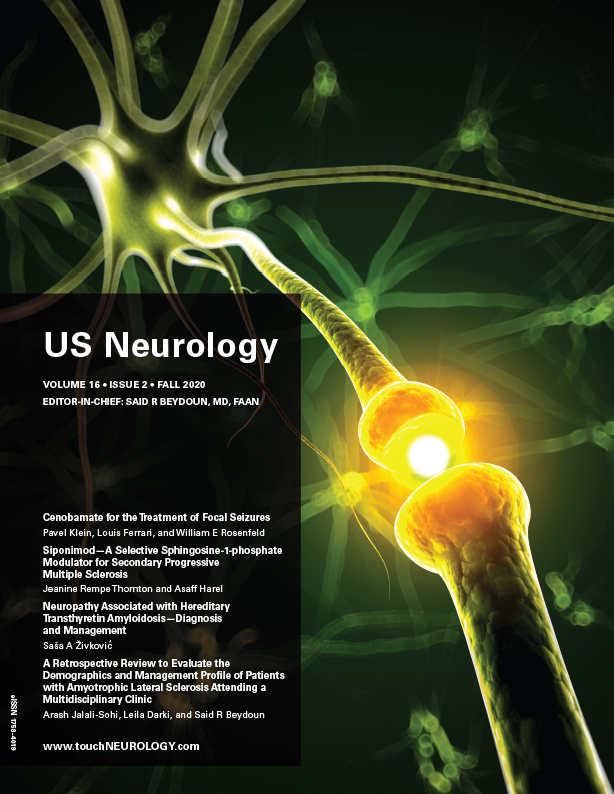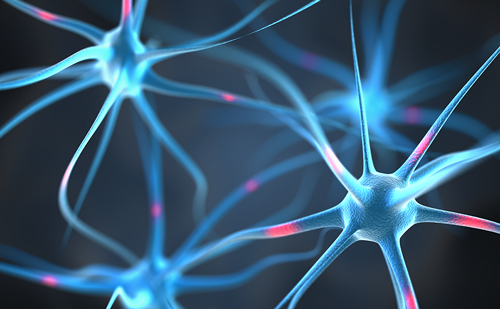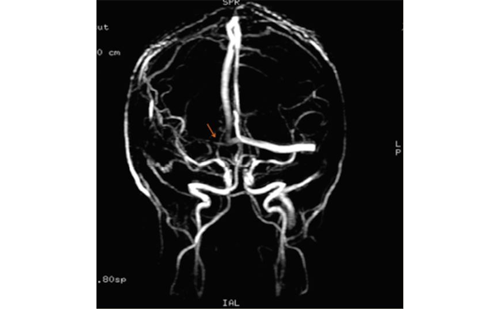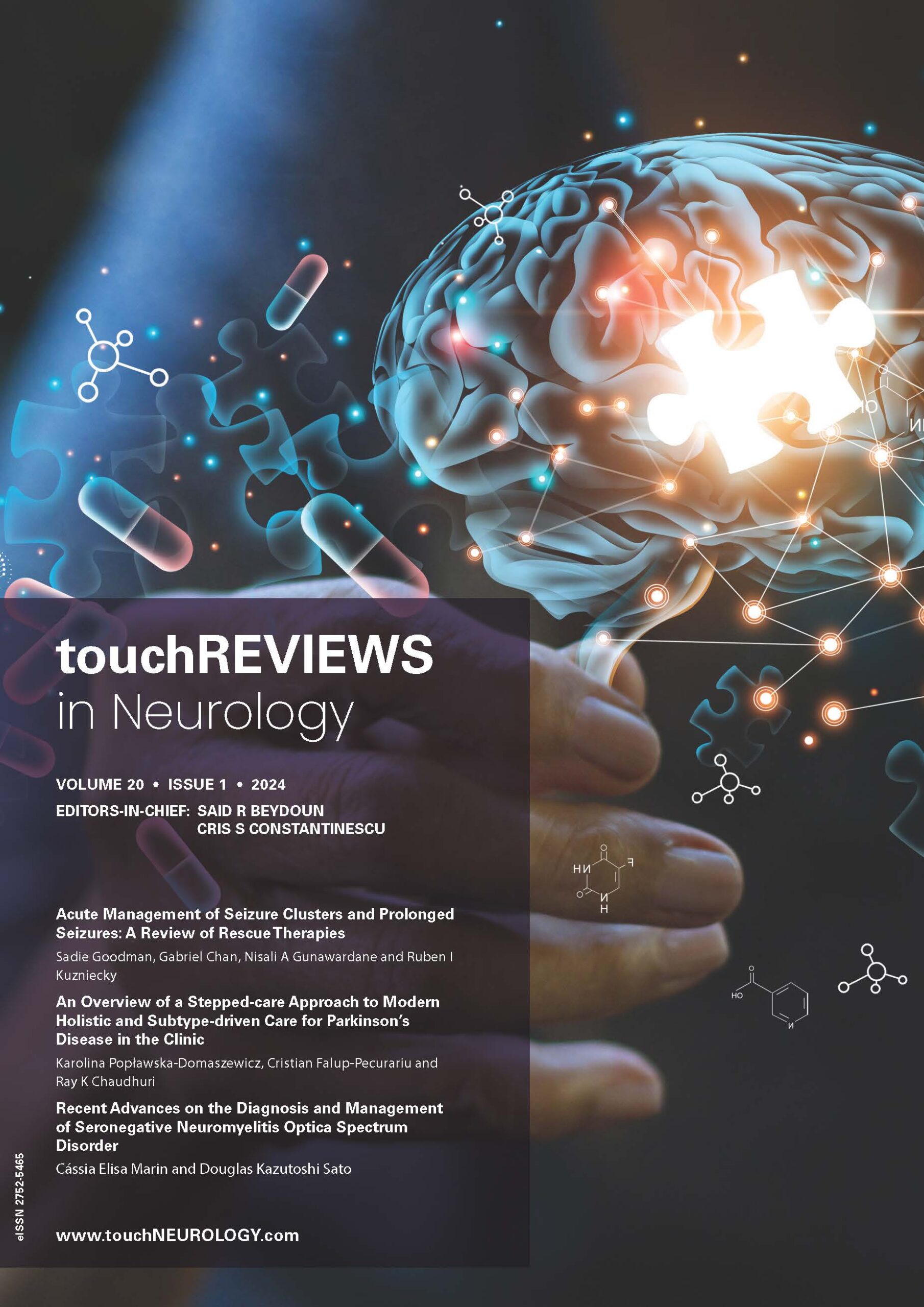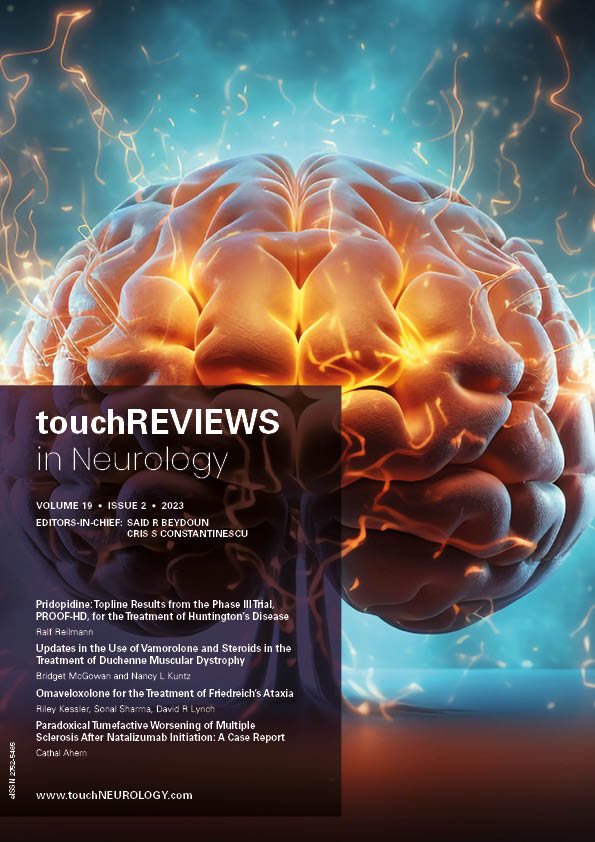US Neurology – Volume 16 Issue 2 – Fall 2020
Introduced by our Editor-in-Chief, Said Beydoun, we’re delighted to share with you the latest edition of US Neurology, which includes a couple of articles from his own research teams at the Keck Medical Center of the University of Southern California in Los Angeles, CA.
This issue’s content includes exciting topics related to the management of psychiatric disorders (postpartum and major depressive disorders), epilepsy (focal seizures), secondary progressive multiple sclerosis, neuromuscular disorders (hereditary transthyretin amyloidosis, amyotrophic lateral sclerosis, and botulism), and diagnosis of suspected cerebral venous thrombosis. We trust you’ll find something to catch your own clinical interest – enjoy!
Thanks to all who have contributed toward this edition. We are welcoming submissions to our 2021 editions. If you are interested, you can submit here or contact us directly.
Foreword
Welcome to the latest edition of US Neurology, which features a diverse range of topical articles covering a range of therapeutic areas relevant to neurologists and other practitioners involved in the care of patients with neurological illness. We begin with an expert interview, in which Handan Gunduz-Bruce provides an overview of zuranolone, an oral, positive allosteric […]
Expert Interview
Altered neurotransmission of γ-aminobutyric acid (GABA) has been implicated in the pathogenesis of depression. In this expert interview, Dr. Handan Gunduz-Bruce discusses the background and rationale for investigating zuranolone, an oral, positive allosteric modulator of GABA type A (GABAA) receptors, as a potential treatment for postpartum depression and major depressive disorder. She also provides an overview […]
Commentary
Dogma dictates that scientific literature should be couched in the third person, past tense. The idea is to obviate the potential to introduce personal bias that may accompany first person, present tense, which is creeping into modern scientific writing. This use of the first person, I am reliably told, followed wide adoption of blogging, in […]
Reviews
Epilepsy is a very common neurological disease, affecting more than 50 million people worldwide and 3.4 million people in the USA.1–3 Focal seizures, formerly partial-onset seizures, are the most common type, making up ≥60% of cases.4–6 Patients with epilepsy have an increased risk of morbidity and mortality, a decreased quality of life and are more likely […]
Siponimod—A Selective Sphingosine-1-phosphate Modulator for Secondary Progressive Multiple Sclerosis
Multiple sclerosis (MS) is a chronic neuro-inflammatory condition estimated to affect over two million people worldwide. Several subtypes of MS have been described, and they are defined by their clinical phenotypes.1 The majority of patients initially exhibit relapsing remitting MS (RRMS), which is characterized by acute episodes of overt inflammation associated with abrupt clinical decline, most […]
Hereditary transthyretin amyloidosis (hATTR) is a progressive life-threatening disease that typically presents as progressive sensorimotor polyneuropathy, restrictive cardiomyopathy, or a combination of both.1 Patients with hATTR-associated polyneuropathy (hATTR-PN) typically require assistance walking after 5–6 years, and die within 7–10 years from the onset of neuropathy.2 However, clinical manifestations of amyloidosis can affect other organs as well, including […]
Original Research
Amyotrophic lateral sclerosis (ALS) is a progressive neurodegenerative disease that displays heterogeneous age of onset, symptoms, and progression.1,2 The disease presents clinically with upper and lower motor neuron features.3 There is no definitive test or assay that can be used to diagnose ALS, so the diagnosis is reached by ruling out other diseases that mimic the condition […]
Case Reports
Botulism is an extremely rare paralytic illness caused by neurotoxins produced by the bacterium Clostridium botulinum.1 While much less common, botulism can result from infection by C. butyricum and C. baratii as well.1 Found in soils and sediments worldwide, C. botulinum is a strictly anaerobic, Gram-positive, spore-forming bacterium that produces botulinum neurotoxins (BoNTs).2 There are currently eight known botulinum toxin serotypes, which are designated by […]
Cerebral venous thrombosis (CVT) is a rare condition.1–3 While thrombophilias, contraceptive pill, hormonal replacement therapy, and neoplasms are well-established predisposing factors, steroid use is a less-common possible risk factor, particularly with regard to anabolic androgenic steroids (AAS).1–4 We intend to describe what is known about AAS and present a case of CVT associated with AAS use […]

Trending Topic
The prevalence of unruptured intracranial aneurysms (IAs) is approximately 3% of the population, with incidence on the rise due to the increased utilization of neuro-imaging for diverse objectives.1,2 The average risk of rupture for unruptured IA is estimated to vary from 0.3% to exceeding 15% per 5 years.3 Ruptured IA is the primary aetiology of […]
Journal Archive
touchREVIEWS in Neurology is a peer-reviewed, free-to-access, bi-annual neurology journal comprising review articles, case reports, practice guides, theoretical discussions, and original research. It features balanced and comprehensive articles written by leading authorities, addressing the most important and salient developments in the field of neurology.
Latest articles videos and clinical updates - straight to your inbox
Log into your Touch Account
Earn and track your CME credits on the go, save articles for later, and follow the latest congress coverage.
Register now for FREE Access
Register for free to hear about the latest expert-led education, peer-reviewed articles, conference highlights, and innovative CME activities.
Sign up with an Email
Or use a Social Account.
This Functionality is for
Members Only
Explore the latest in medical education and stay current in your field. Create a free account to track your learning.


